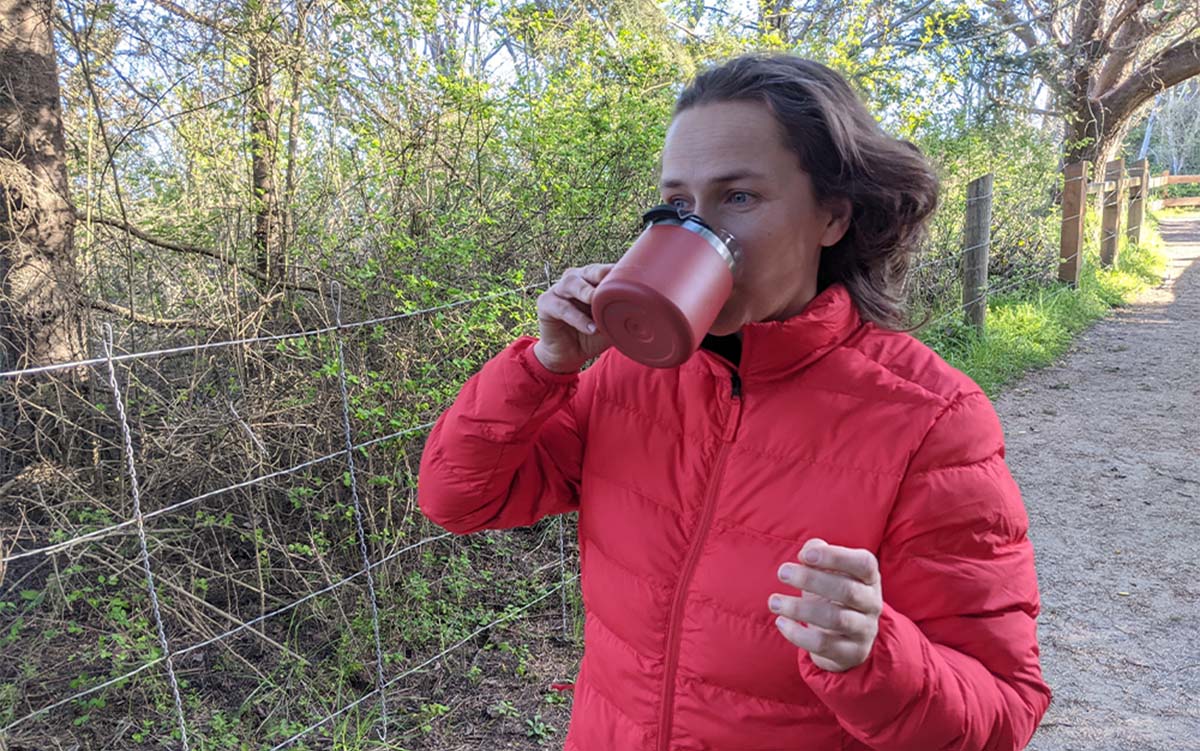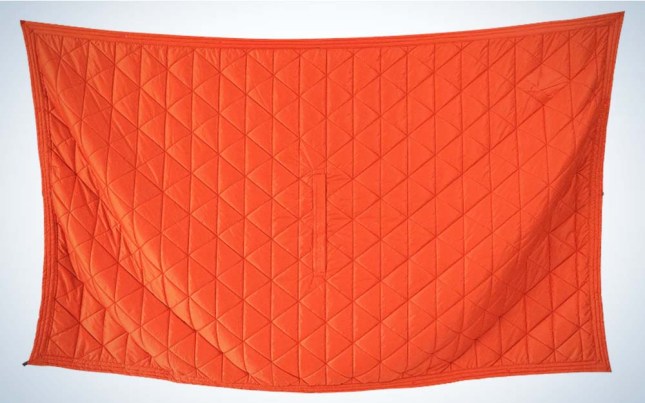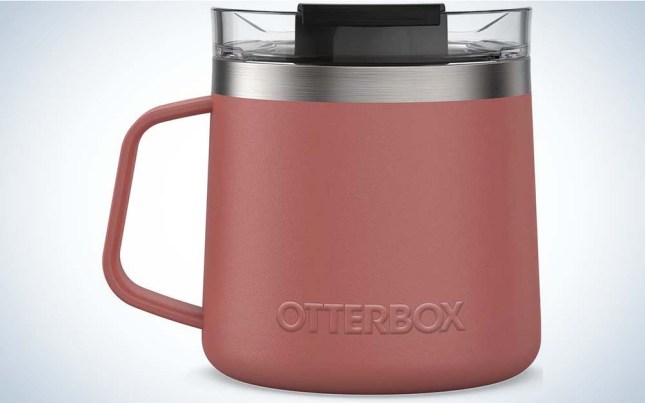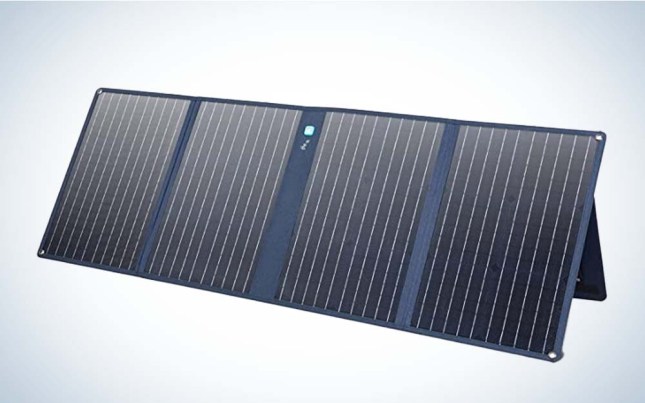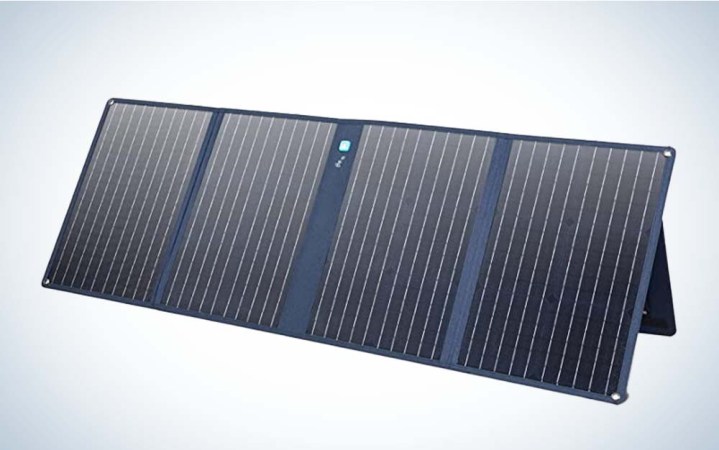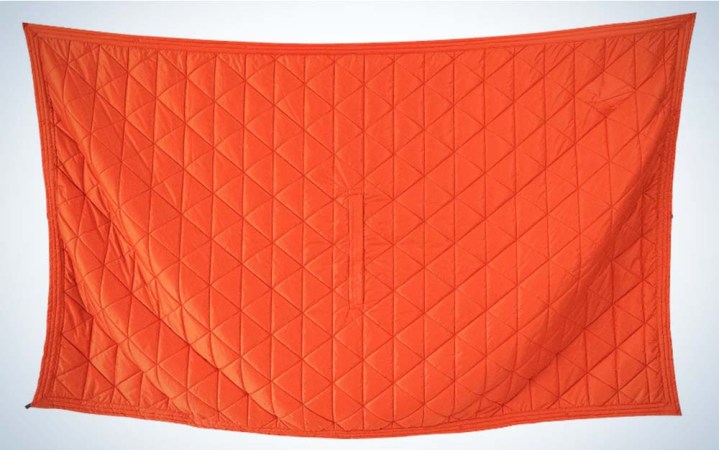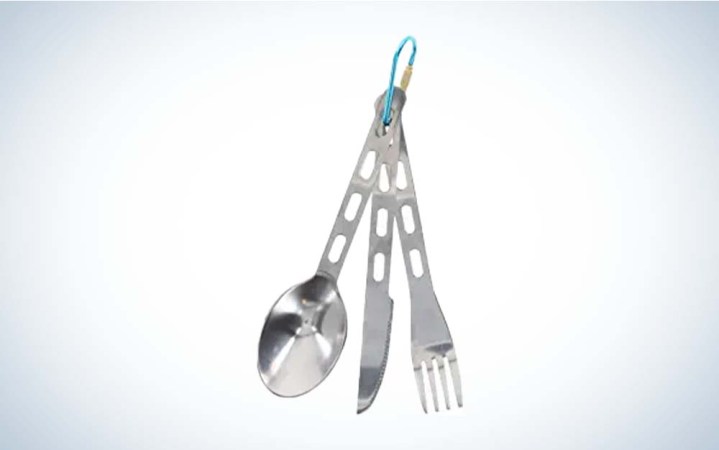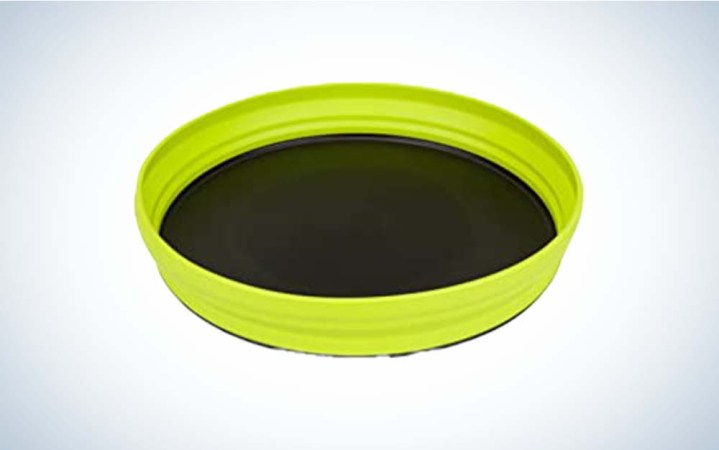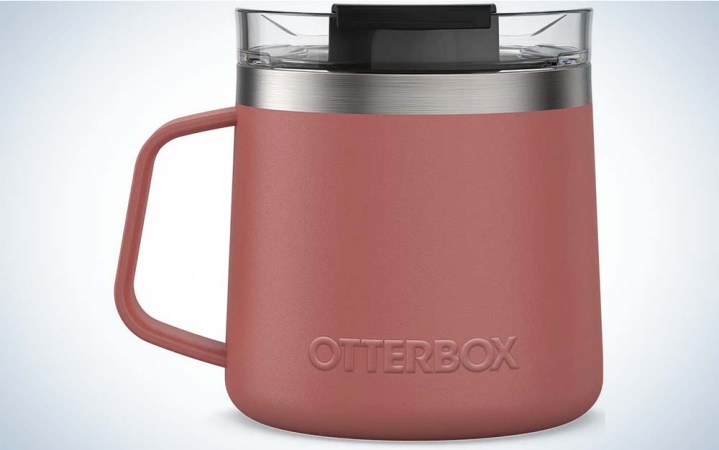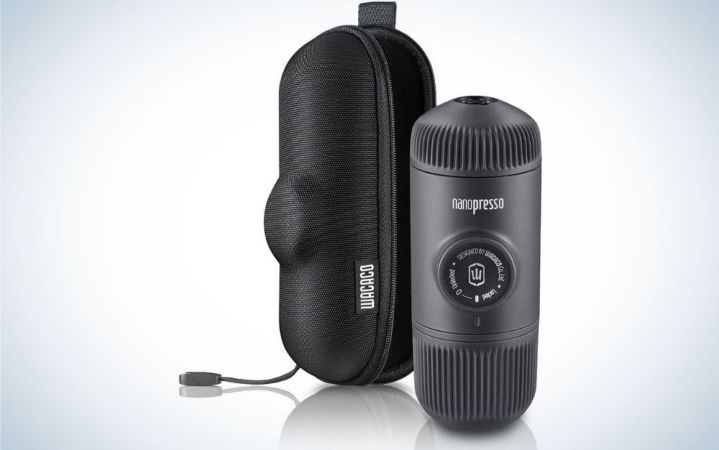We may earn revenue from the products available on this page and participate in affiliate programs. Learn More ›
Once you’ve dialed in the big-ticket items—tent, sleep systems, stove—you can start to look at really customizing your setup with camping accessories. But with dozens and dozens of outdoor products available in every conceivable category from portable fire pits to rocking chairs to slippers, it can be hard to know where to start. The Outdoor Life gear team and contributors have been testing some of the biggest categories in camping over the last several months. Now, I’ve narrowed down a list of the best camping accessories from those tests that are available today:
- Best Solar Panel: Anker 625 Solar Panel
- Best Table: Dometic GO Compact Camp Table
- Best Blanket: Kammok Mountain Blanket
- Best Utensil: UST Klipp Utensil Set
- Best Plate: Sea to Summit X-Plate
- Best Mug: OtterBox Elevation
- Best Espresso: Wacaco Nanopresso Portable Espresso Maker
Things to Consider Before Buying Camping Accessories
Budget
Some great camping accessories can cost hundreds of dollars, while others are relatively inexpensive. Before choosing what you want to spend this year’s budget on, consider what items in your gear closet are most in need of an upgrade. What is starting to wear out? What did you purchase a decade or more ago that would benefit from an upgrade? What most limits your ability to enjoy the outdoors?
Space
Beyond budget, one of the biggest constraints with camping accessories is space, so consider if the amount of space a camping blanket or solar panel takes up in your vehicle will help maximize your camping experience.
Longevity
Before you drop some of your hard-earned money on a fun new camping accessory, it’s important to know if it is a solid long-term investment. The Outdoor Life gear team looks carefully at the durability of the products we test to help you make you this decision.
Best Solar Panel: Anker 625 Solar Panel
Key Features
- USB max output: 15W (5V)
- XT-60 port: 100W (26.5V)
- Weight: 11 pounds
- Ports: USB-A, USB-C, and XT-60 (includes both XT-60 to XT-60 cord and XT-60 to DC7909 connector)
- Dimensions: 56.9 inches x 20.7 inches x 1.8 inches (unfolded); 20.7 inches x 18.5 inches x 3.4 inches (folded)
- Warranty: 18 months
Why It Made the Cut
The Anker 625’s ability to power devices in even heavily overcast conditions makes this a smart investment for car campers across the country.
Pros
- Strongest panel in my test, charged two devices simultaneously under very overcast skies
- Overpower protection
- Integrated sundial
Cons
- Expensive
- Less stable when set up than other panels in my test
Product Description
During the cloudiest part of my best solar panels for camping tests, when dark gray clouds obscured the sun and the other solar panels packed it in, the Anker 625 was still able to charge my phone 5 percent in only five minutes. Then it powered up a 32,000 mAh battery pack 5 percent in a half hour under similar conditions. When I plugged both the battery pack and the phone in at the same time, it kept charging. If there is any chance of less-than-ideal weather on your camping trip, then this is the solar panel solution you’ve been looking for.
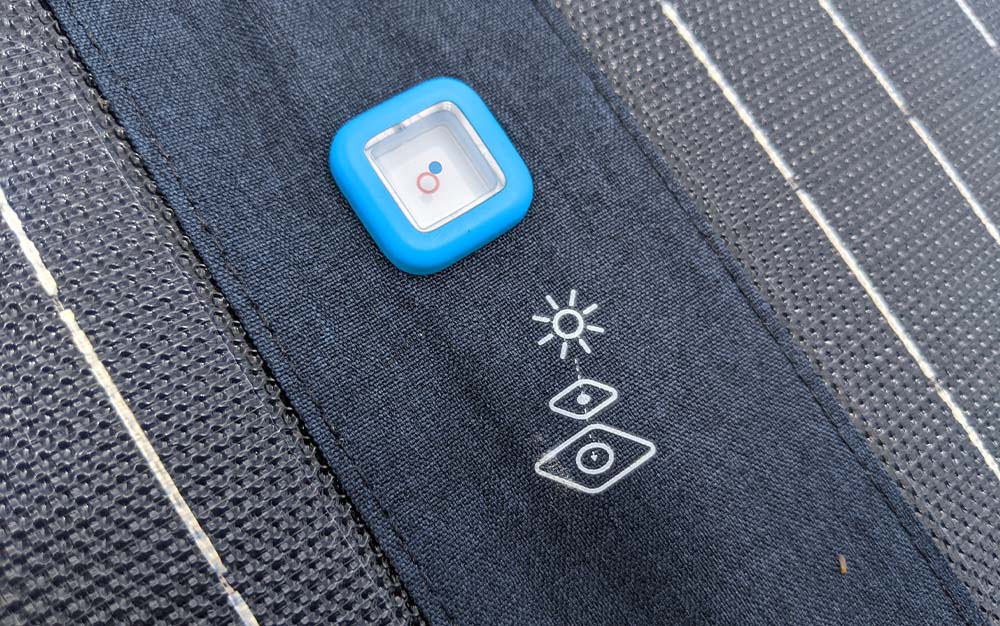
The Anker 625 was also only one of two solar panels in my test to incorporate an integrated sundial, which allowed me to optimize the positioning of the panel. This is helpful when it’s tough to distinguish the angle of the sun. Less helpful were the kickstands. Despite the nearly five-foot width of the four panels, there were only two kickstands provided, one on each end. This meant that the unit had a tendency to sag in the middle, and it moved more in the light breeze that blew during testing than other setups with a higher kickstand to panel ratio.
Best Table: Dometic GO Compact Camp Table
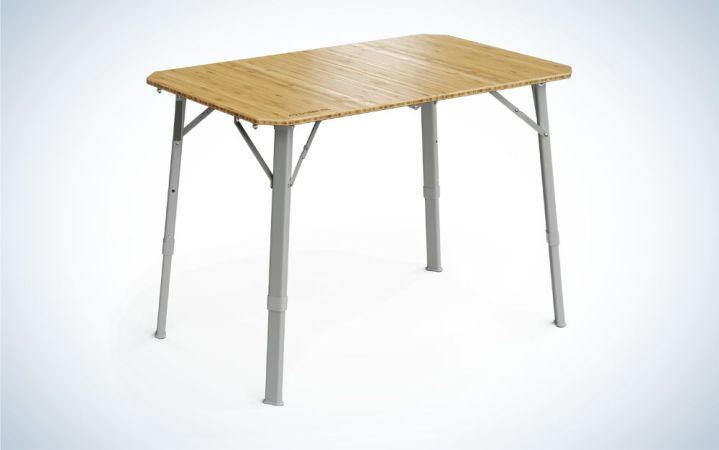
Key Features
- 3-way height adjustment
- Table dimensions: 26 inches x 39 inches
- Materials: bamboo and aluminum
Why It Made the Cut
The look, feel, and functionality of this table is such that it’s almost like bringing along your dining room table.
Pros
- Sturdy
- Easy to adjust to three heights
- Easy setup
Cons
- Heavy
- Expensive
Product Description
Our tester of the best camping tables reported that this was among the easiest tables to set up and break down that they had ever used. It folds in half for storage, with locking clips that keep it stable when opened and locked when shut, and it has a plastic carrying handle. It also requires only 25½x19½ inches of space (about the size of a medium suitcase) during transport.
The sleek bamboo design, among the most beautiful we have ever seen, makes it suitable for inside use, too. The complete surface of the table is 39½x25½ inches and can easily accommodate four grown adults around it. The legs lock into position without any hassle, and are positioned tight to each corner, allowing for optimal leg space when sitting around it.
The best feature is that this table has three different heights: 19 inches, perfect for a coffee table; 22½ inches, which works well as a side or picnic table when using smaller camp chairs, and 27 inches, which is best for food prep or eating around it with larger camp chairs.
However, it’s a bit heavy at 20 pounds, but this will last a lifetime and impress every campground guest. Bonus: For an extra $40, you can buy a padded carrying case for additional protection while tossing it in and out of your vehicle.
Best Blanket: Kammok Mountain Blanket
Key Features
- Size: 84 x 50 inches
- Packed Size: 15.5 inches x 9.5 inches x 9.5 inches
- Materials: 40D nylon ripstop shell and polyester
- Machine washable
Why It Made the Cut
This fleece underdog was the best camping blanket in our test thanks to its warmth and versatility. You can also use it as a blanket or a poncho and convert the stuff sack into an impromptu pillow.
Pros
- As warm as any camping blanket tested
- Versatile
- Stuff sack can be used as a pillow
Cons
- Less water resistant than others in my test (I wouldn’t use this on anything wetter than a light morning dew)
- Bulky
Product Description
I was fully expecting one of the puffer blankets—filled with light-as-air down feathers or state-of-the-art synthetic fill—to claim the top spot of my best camping blankets test. But in the end, it was a fleece blanket that impressed me most. Not just any fleece blanket, though: a fleece blanket lined with an impressively hardy 40D nylon ripstop fabric on one side that I had no hesitation throwing on the ground. One with a wide snap-button opening in the center that you can poke your head into, poncho style. And that fleece? I grew up in the PNW, so I know fleece, and this is some quality fleece. But it wasn’t until I was stuffing this one away after testing that I finally noticed the detail that won my heart. The stuff sack is lined on the inside with fleece. I immediately saw myself turning that sack inside out and stuffing it with my puffer jacket and a spare shirt. Who needs to bring a pillow? The space savings pays for itself.
Surprisingly—even with its comparatively small amount of puffer insulation—this provided as much warmth as any camping blanket I tested. That being said, I would not advise using this as an alternative to a true sleeping bag unless you are confident that nighttime temperatures won’t dip below 60 degrees. Beyond wishing that there was just a tad more insulation with this camping blanket (a common theme in my test), I also found that the stitching on the nylon side, some of which seemed more for decoration than baffling, allowed more water to seep into the blanket than others.
Best Utensil: UST Klipp Utensil Set
Key Features
- Manufacturer Weight: 2.2 ounces; measured weight: 3.6 ounces
- Length: 6.5 inches
- Materials: stainless steel
- Includes a fork, spoon, and knife
Why It Made the Cut
A bargain basement price and good functionality makes the Klipp utensil set a great choice for car campers.
Pros
- Low price
- Reasonably durable
- Good functionality across all three utensils
Cons
- Heavy
Product Description
If you’re buying utensil sets for the whole family, and you don’t want to have to buy them twice, the UST Klipp merits serious consideration. For a quarter of the price of similar sets, it provided great durability and only bent slightly during that test. The fork and knife both rated “good” during the pasta and the salami test, respectively, while the spoon was one of the best I tried for slurping up soup, which held a high volume of liquid with a nice angle on the grip. The only ding here is weight, which I measured at 1.2 ounces above the stated manufacturer weight.
Best Plate: Sea to Summit X-Plate
Key Features
- Manufacturer Size: 8 inches; measured size: 8.5 inches
- Manufacturer Weight: 5 ounces; measured weight: 6.2 ounces
- Materials: silicone; nylon base
- Depth: 1.4 inches
- Dishwasher safe
Why It Made the Cut
The Sea to Summit X-Plate scored high in both durability and insulation, and it collapses down to an impressive half inch when it’s time to pack up, which made it the best overall.
Pros
- Deep enough to hold saucy foods or even soup
- Surprisingly durable
- Insulates well
- Packs down small
Cons
- Nylon base is not scratch resistant
- Pricey
Product Description
The durability of the Sea to Summit X-Plate excelled in both the throw test and the drop test of my review of the best camping dishes—if I squinted, I could see a tiny scuff on its edge, but that’s it. I was also impressed at how well the X-Plate insulated my hand from heat during the boiling water test, which came in second overall.
But what makes the X-Plate unique is its collapsible sides. When they were up, the plate was almost one and a half inches deep, the highest of any tested, but less than half an inch tall with the sides dropped down, which would be my preference for anything that needs a knife and fork. The collapsible sides also make it one of the best camping accessories and easier to pack into a camping box at the end of the day.
Best Mug: OtterBox Elevation
Key Features
- Size: 14 ounces
- Weight: 11 ounces
- Ice Cube Test: 3 hours, 45 minutes
- Materials: Stainless steel with internal copper lining; lid is made from polyester, silicone, and polypropylene
- BPA and BPS free
- Hand wash
Why It Made the Cut
The unique lid design of the Elevation made this my favorite mug to use in the field. This camping mug also did the best job at preventing leaks during testing.
Pros
- Tall rim around the lid made it easy to sip hot liquids
- Lid locks in place securely, minimizing spills and drips
- Bottom-heavy design makes it hard to accidentally tip over
Cons
- Middle of the road insulator during testing
Product Description
The problem with double-wall vacuum-sealed camping mugs is that sometimes they do their job a little too well, keeping coffee at a blistering temperature well after I would have expected it to cool off. So while I didn’t think much of the centimeter-tall rim of the OtterBox Elevation’s lid while running the insulation, weight, and leak tests, it’s what stood out to me most during the field test of the best camping mugs, when taking a tentative first taste to see if my coffee was cool enough to drink yet. The longer rim made it easy to take a slower sip, so that the outside air was cooling the hot coffee before it hit my mouth.
The OtterBox also performed well during the rest of testing. It was only 40 minutes behind the winner of the insulation test, and did a better job at preventing leaks and spills in the leak test than everything else I tested. When held at a 90-degree angle for 5 seconds, only three drops escaped from the seam between the mug and the lid.
Despite its middle-of-the-pack performance during the insulation test, my coffee never got cold during the field test—in part because the comfort, seal, and security of this mug made me actually want to drink from it.
Best Espresso: Wacaco Nanopresso Portable Espresso Maker
Key Features
- Maximum Pressure: 261psi
- Dimensions: 6.1 inches x 2.8 inches x 2.4 inches
- Weight: 11.8 ounces
Why It Made the Cut
The easy-to-use Nanopresso produced one of the best coffee experiences I’ve ever had while camping.
Pros
- Easy to use
- Produces delicious coffee
- No batteries required
Cons
- Only produces one shot of coffee at a time
- Multiple loose pieces can be easy to lose
Product Description
A great camping mug deserves a great cup of coffee, but in the outdoors we frequently settle for just OK. Grounds in our coffee, a weak brew, or the best of the still-mediocre instant coffee brands available are usually go-to’s at camp. If you’re ready to upgrade to something better, and don’t mind spending a bit of extra time on your cuppa, this espresso maker from Nanopresso may be the right choice for you.
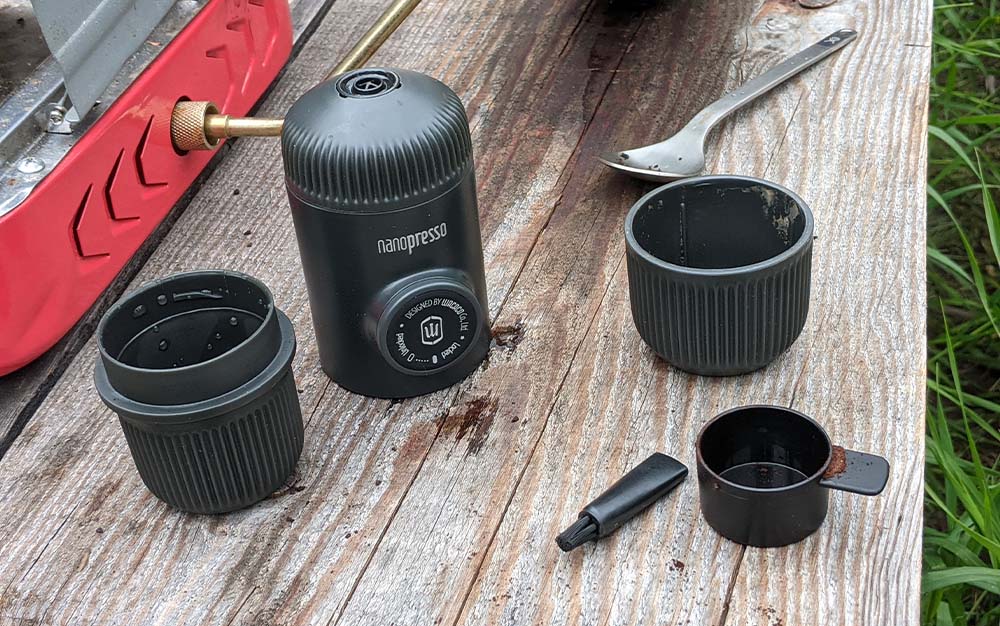
When you first open up the Nanopresso, the sheer number of moving parts can be a bit daunting. But once I got the hang of it, I realized the Nanopresso was really quite streamlined, and not unlike the espresso machine I have at home. Once the ground espresso is packed into the cartridge and secured to the body of the Nanopresso, it’s simply a matter of pouring the hot water into the reservoir, screwing the body onto it, and then pumping the knob until espresso pours out the other side. And the espresso that it produces really does taste like what you’d expect out of a home machine.
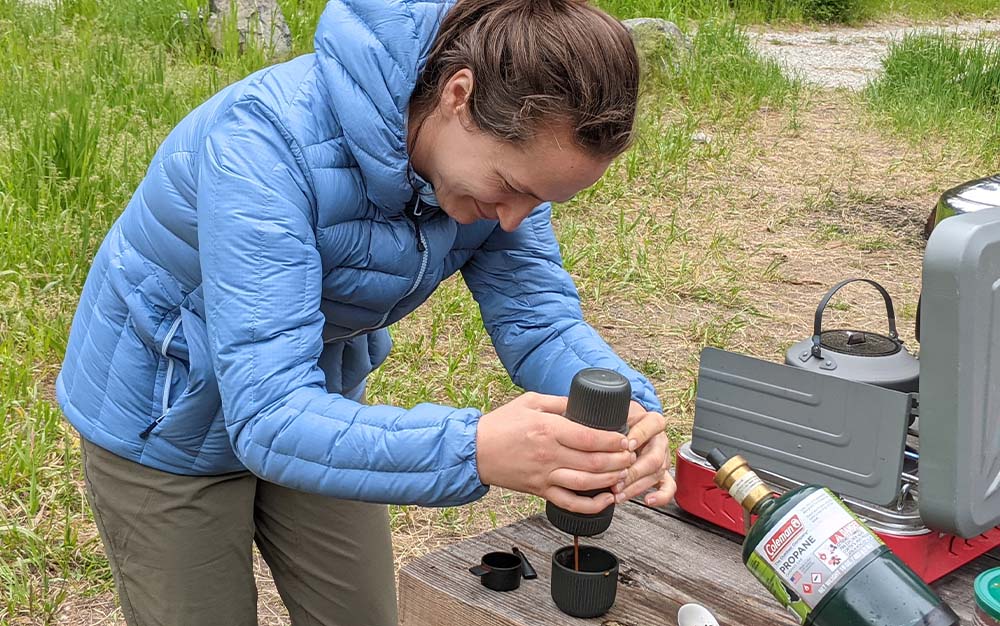
The only tricky part with the Nanopresso was packing it all away again. Because of its streamlined design, all of those different moving parts really are essential to create a shot of espresso, but they are also easy to lose. I thought the scoop, which is also used to tamp down the grounds, was lost on my camping trip until it turned out to be buried in the unused espresso grounds. Also, like all espresso machines, the Nanopresso requires regular care and maintenance to stay in prime condition.
FAQs
Camping accessories can cost next to nothing if they are a hand-me-down or purchased second hand up to hundreds of dollars.
Do not bring anything camping that you wouldn’t want to get dirty, dusty, or wet. Beyond that, just about anything can come camping with you as long as you take care, and respect its limitations. Many campers also choose to leave behind a preponderance of electronics so that they can fully enjoy their time recharging in the wilderness.
The most important items to have while camping are a tent (to protect you from the elements), a sleep system (a bag and a mat), appropriate clothes for the conditions you expect to face, and a food preparation strategy, which could involve everything from a full camp kitchen and electric cooler to simple boil-in-bag meals that need nothing more than a backpacking stove.
Methodology
The camping accessories in this article were chosen after months of research and testing by the Outdoor Life gear team and our contributors. Included are selections from our test of the best solar panels for camping, best camping tables, best camping blankets, best camping utensils, best camping dishes, and best camping mugs, as well as other products that were tested in tandem. All of our testing involved hands-on, in-the-field experiences, with each product and its competition.
Final Thoughts
The best camping accessories will last you and your family for years. We recommend prioritizing the accessories that most help you and your family to overcome the limitations of camping (whether they’re seasonal, environment-based, or comfort related), so that you can maximize your time out of doors.
